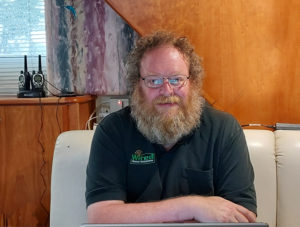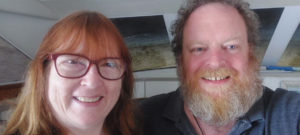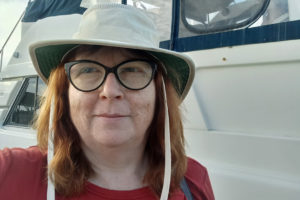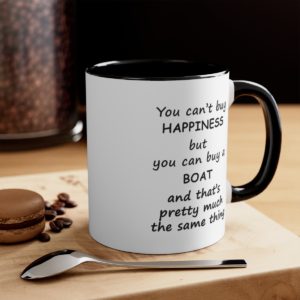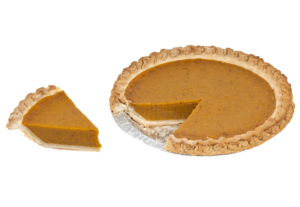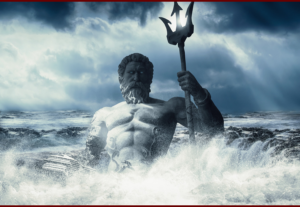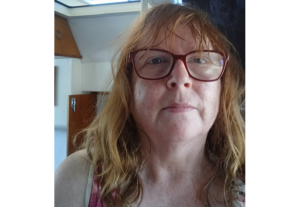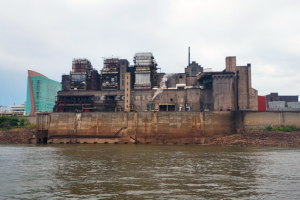[00:00:00]
Hello everyone. For those of you who don’t know me, I’m Greg, Charlene’s significant other and Matthew’s father and, um, she’s been doing all the updates on the website and doing them in written form and I may do that from time to time but I thought I think I would like to try to do mine in video form. I hope that this isn’t too shaky, um, but uh I just thought it might come out better if I just, uh, did it off the top of my head, so…
[00:00:31]
I am in my quarters. My cabin. It’s 2:30 at night Saturday night on what is now September the 19th, I believe and yesterday was to be the day we started the Loop.
[00:00:51]
If you’ve been following along with Charlene, she has, uh, outlined, all of our time getting to the States and living in Seneca for a while. And then going upstream and living in Chicago for a while.
[00:01:08]
And if you’ve been following along, you’ll know that we’ve had some engine problems and so we had no starboard engine and our reservation in Chicago was up and so we were in a little bit of a bind. We found ourselves in a position where wwe had no starboard engine. We had to move somewhere. And it was recommended to us that we go to Hammond, Indiana, which is 15 miles south of where we were.
[00:01:40]
So this was also the very first trip that Charlene and Matthew and I have done on the boat without a captain aboard and let me say that it was scary as shit. Sorry, excuse my language, but uh, first off, as I mentioned, we had no starboard engine. We had it a little bit. I did try starting it and it worked a little bit here and there. Secondly, the winds were very strong today – about 15 miles an hour with gusts to maybe 23 or 24 – and some pretty big waves.
[00:02:19]
And, so, for those of you who aren’t boaters, um, most of the time, this would not be a boating day. That’s a little too windy, especially with a big, tall, boxy boat like we have which acts like a sailboat as far as catching the wind. Most people would stay at the dock on a day like this but we had to go somewhere. We didn’t have a choice. Or, at least I didn’t think we did.
[00:02:44]
And so. We headed out on our very first journey. Fifteen miles. Just fifteen miles. I thought, we can make it on one engine fifteen miles south and so, that’s what we did.
[00:02:57]
And, uh, halfway through, I thought that we had made a very serious mistake because our port engine started to struggle quite a bit. So, um, when our starboard engine goes, when it does go, it goes in brief spurts, maybe for five minutes maximum, and, uh, we get it up to about 3,000 RPMs, and then it starts to cut out. It starts to get wavery. It starts to go from 3,000 to 2,000; 3,000 to 2,000, then 3,000 to 1,000; 3,000 to 1,000. Then it just starts to sit around 1,000, then 800, and then it dies. And then we give it a little bit of a rest and then sometimes it fires up again. But that whole sequence goes a lot quicker and um eventually the starboard engine doesn’t work at all. So essentially we’re on one engine.
[00:03:50]
We have a very strong ah cross breeze and cross waves today going from left to right as we’re heading south. And, we got about half way down and um the port engine started to do that. So the problem, whatever we have, we’re pretty sure that it’s fuel related. Whatever the problem is that we have with the starboard engine appears to have now spread to the port engine. At some point the fuel flow as I understand it um combines from left tank and right tank and each one has their own filter into a common filter. And so if there’s guck in the line it may have gone from the starboard to the common part. And I could be getting this wrong, for those of you who are boaters, I’m probably explaining it entirely wrong and you can correct me and tell me what’s wrong.
[00:04:42]
But, um, in any event, ah once we got about halfway down on Lake Michigan the left engine started to go from like 3,000 RPMs down to say 2,400 and then back to 3,000. And then after it while it was 3,000 to 2,000 and I wasn’t sure what was going on ’cause the boat was rolling a lot. I didn’t know if that was it so we sorta – I eased up on the throttles just to not push it so hard. So we’re only going about 10 miles an hour and ah it’s getting weaker and we’re out in the middle and none of has any experience.
[00:05:21]
So I’ve got Matthew on my left who’s monitoring all of the um screens on board and Charlene’s on my right who’s um keeping an eye out for everything around us. And we have a breakwater, a large breakwater, to our right, which is, you know, made up of cement and guarded by rocks. And so I could take a cut through the breakwater or I could go around the breakwater and I decided I didn’t want to be anywhere near that breakwater because I wasn’t sure if we were going to have an engine or not.
[00:05:53]
And, sure enough, eventually the port engine died. And so, we had to drift uh for a little while. And, I was really worried, to be honest, I was more worried than I let on to Charlene and Matthew, that we had made a big mistake. And so, we do have a VHF radio on board and it’s got DSC and AIS, which means that there’s a button on there that says DSC and, uh, it’s a distress signal. And if you hold that button in for 5 seconds then it will send out a distress signal and it will broadcast your exact geographic location to the Coast Guard and, um, in all likelihood, someone will come out and tow you.
[00:06:44]
And I was, I would say seconds away from pushing that button and I really didn’t want to do it. It was our first journey and uh so. Charlene asked me if I was going to and I said, “Yes, yes, I think I’m going to. I think we don’t have much choice. But, let’s just let the port engine rest a little bit.”
[00:07:06]
And so we drifted for maybe five or ten minutes, let it cool off. I fired it up. It started. And we proceeded again and uh went a little further. So, the first time it died we were maybe halfway through the fifteen miles. The second time it died we had now gone another half so we were maybe now three quarters of the way but we were a little closer to that breakwater on our starboard side and it died and so we decided to go through the same procedure again.
[00:07:40]
And, uh, the boat really rolls. It rolls a lot more when the engines are not running. So, it was nerve wracking but we did manage to get it started and our instructions were to hail um the marina on channel 16 to find out what slip we had and so I had alerted them ahead of time that we’d be coming in on one engine.
[00:08:05]
And as we got closer and closer and now we’re only going about 5 miles an hour the whole way. It just felt like – well it did take over 2 hours to do 15 miles – uh, we hailed them, they told us to come in to the gas dock which was sort of an S turn – turn right, turn left.
[00:08:24]
There was a couple of guys in a boat fishing right in the way which – we cursed at them a little bit – thought “Why? Why would you choose to sit right in the entrance between the breakwater and the marina?”
[00:08:37]
But anyways, ah we got to the marina, we got our slip assignment, we paid our fees, and they gave us a fairly easy slip to get into ah thank you. And ah we managed to get in there. I did hit the dock. I had not practiced docking in that sort of area before and I think had I had both engines I wouldn’t have any problem at all. I would have been able to pivot with the starboard engine forward and port engine reverse but I had no starboard engine. So I had to do a left turn with only a port engine with a pole on the right and a dock on the left and um a pretty good wind.
[00:09:19]
And I did hit the dock and the dock box. I didn’t hit it too hard. Overall, I thought it wasn’t a bad docking but I got in there. And then once we were in there, we realized that we had to turn the boat around because our shore power cord isn’t long enough to go from where the pedestal was on the dock to the back of the boat.
[00:09:46]
So we had to turn that around so that was a 180 that we had to do – again with one engine – but anyways. We got in. And um reversing in wasn’t too bad at all. And ah someone helped us as well on the dock.
[00:10:02]
And I gotta say I’m really pleased with what we did today. Um it wasn’t the prettiest docking. Ah, it was a real adventure. It was a really memorable first trip.
[00:10:21]
We need to know so much more about our boat. And it was probably – it was – a pretty foolish thing to head out with one engine knowing that the type of problem that we have could affect the other engine. And it did. And so for a while, we had no engines. And we’re floating out in Lake Michigan. And, ah, it’s kind of scary.
[00:10:45]
But, you know – this is an adventure. This is fun. This is really, really interesting and I would pick this any time over sitting at a desk or sitting somewhere where you can’t go out and you’re under lockdown. This is the whole idea.
[00:11:07]
Um, we’re doing a lot of things wrong. We know that. Uh, we don’t have enough training. But we’re trying and this is the only way we’re going to learn.
[00:11:18]
And so, we are now in Hammond, Indiana and we’re going to be here for at least 3 days. It could be a week. It could be longer. It’s hard to get somebody to come out and take a look at the boat because everybody’s busy because it’s the start of haul out season and everyone’s getting their boat taken out of the water.
[00:11:36]
We want to get going on the Loop. We don’t want to run too late and ah miss our window and be travelling in cold weather.
[00:11:48]
So, um, I’m just really proud of my son and Charlene and um I think we did great today, and I just felt real gratitude and real freedom that we’re doing this. I know a lot of people ah don’t understand this. A lot of people don’t get a chance to do this. We’re doing it. I feel really lucky. And ah I don’t know. That’s all I have to say for now.
[00:12:14]
What I learned today is ah you shouldn’t head out in conditions like we did with one engine. It’s foolish. We got away with it today but um we should have found another way. I think looking back on it we should’ve just told DuSable, “We can’t move our boat. Our engines are dead.” We didn’t have to tell them one engine was dead. We could’ve just told them, “I’m sorry, we can’t go. We’re just – we can’t.” And they could’ve ah dealt with it.
[00:12:45]
You know I’m sure that somebody would’ve cancelled and we could’ve stayed. But, anyways, we made it. We’re here. We’re going to start the search for somebody to fix it tomorrow. And, this is amazing. This is really amazing.
[00:13:02]
So, I hope this video wasn’t too shaky, too long, or too boring and I think this is the way I’m probably going to contribute to the blog – in video form, but sometimes I’ll write.
[00:13:18]
And it’s now about quarter to three in the morning and I’m tired. I’m going to go to bed. And, ah that’s it. So have a good night and hope you’re all doing well and I will check in again sometime soon. Bye.
